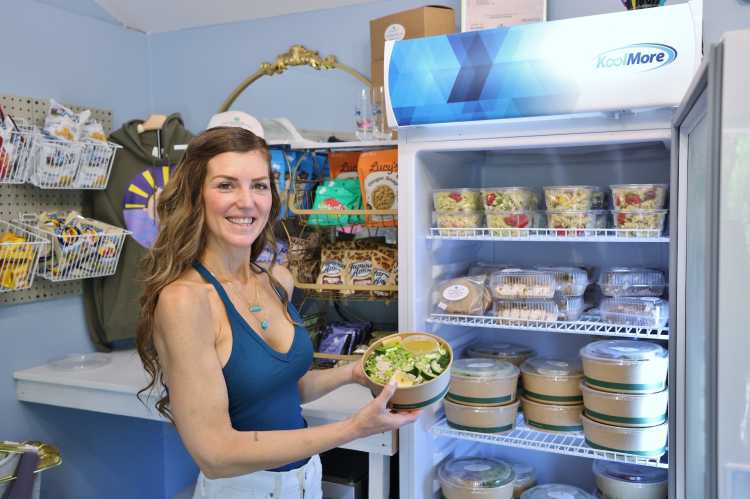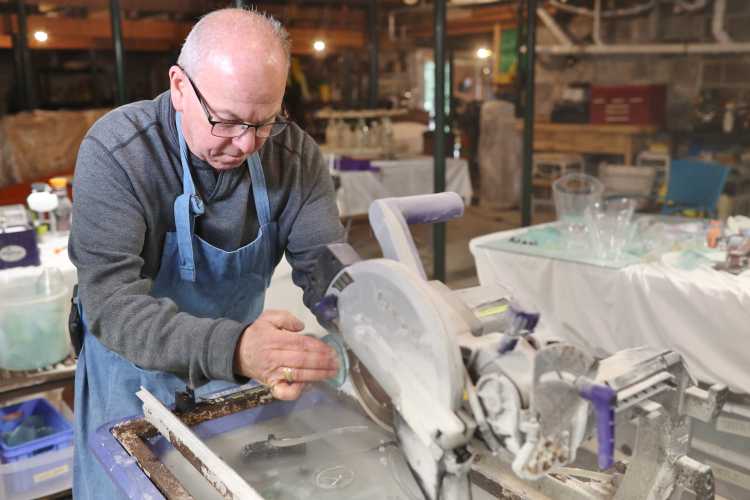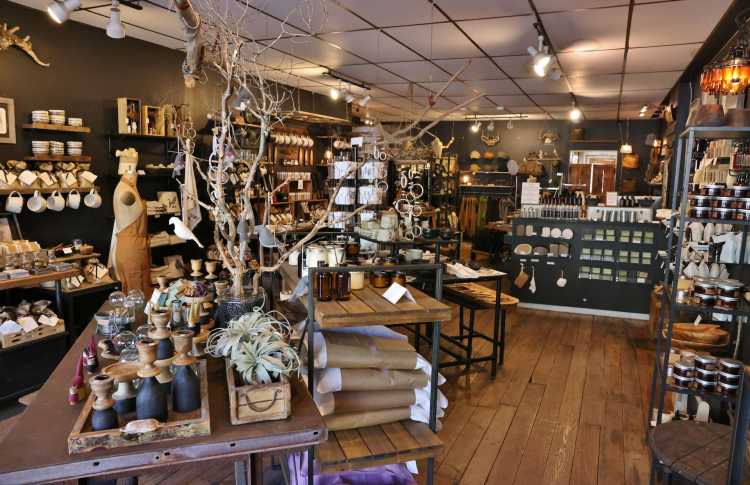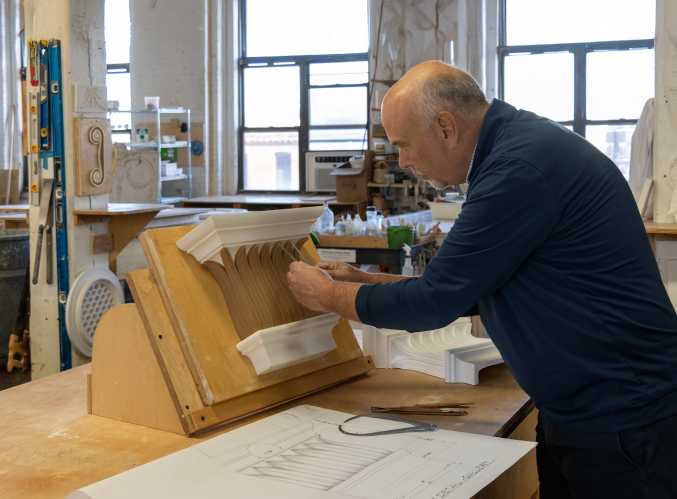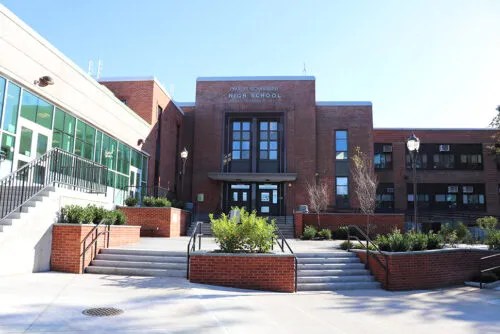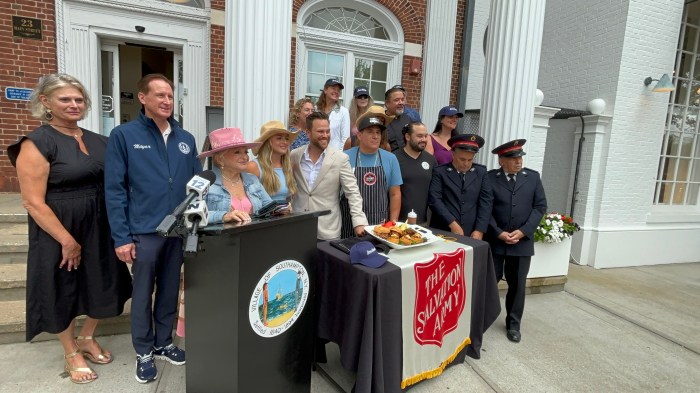Most people visit a public space to view murals. Those fortunate enough may have exquisite fine art hanging on their walls. What if you could have a masterpiece surrounding you, inside your very own space?
Ron Genereux, the founder and artistic director of Art- groove, delivers just that — custom murals on a large scale — to clients, in residences and commercial spaces from Palm Beach to the Hamptons, Mexico City to Hell’s Kitchen in New York City.
What started as a painter’s studio has worked closely with decorators and designers including the world-renowned interior designer Bunny Williams, the late great Albert Had- ley, and the longest-established interior decorating firm in Great Britain, Sibyl Colefax & John Fowler, among many others.
Each mural can have a different intent depending on a client’s need. “Sometimes if you have an architectural mural, it imposes order on a room,” Genereux says. “Whereas if you’re doing a scenic mural you’re transporting them to another place. That’s a unique thing. How a mural is different from a painting is that it encompasses everything — it wraps the room, it fits around the architecture and it transports you to the place where the mural is.”
Genereux, a highly skilled oil painter in his own right, works with other artists and artisans who bring a unique set of skills to the breadth of work Artgroove manages.
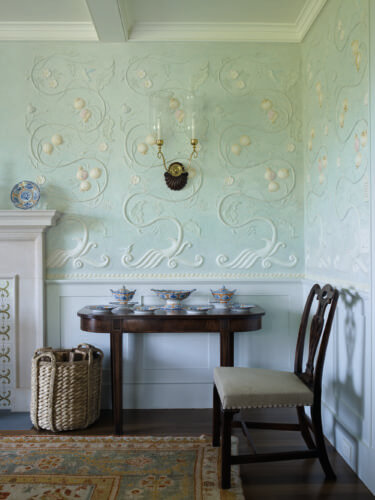
Artgroove also has created wall art for casinos, hotels, restaurants and banquet rooms. Now a 22-year-old business, Genereux has created a niche market for residential work especially.
It was while Genereux, a native of Worcester, Massachusetts, was attending Pratt Institute in New York that he discovered he loved painting murals. He was studying illustration and painting, but working toward a minor in art history with a keen interest in Renaissance art. “All of these palazzos were frescoed and painted,” he says. “I thought that’s something I want to do. I like architecture, I like melding architecture with painting,” he adds, “I liked the idea of creating art that was site-specific, made only for that space — art that only makes sense in that space.”
“So I actually went to my department head and said, ‘I think I want to paint murals. I don’t know that I want to be an illustrator.’ He was like, ‘Well, that’s ridiculous.’ . . . and I said, ‘Okay, I officially don’t care what you think anymore!’ And I just did what I was going to do anyway.”
After school, he went off to Italy — perhaps no more perfect setting to begin a career painting murals. Once Genereux returned to Manhattan, he continued to paint murals for private clients, and then joined a large decorative arts studio as the art director. He started his own company in 1999.
Interior decorators and architects he has worked with before recommend him for his high-quality work and ability to complete complex projects.
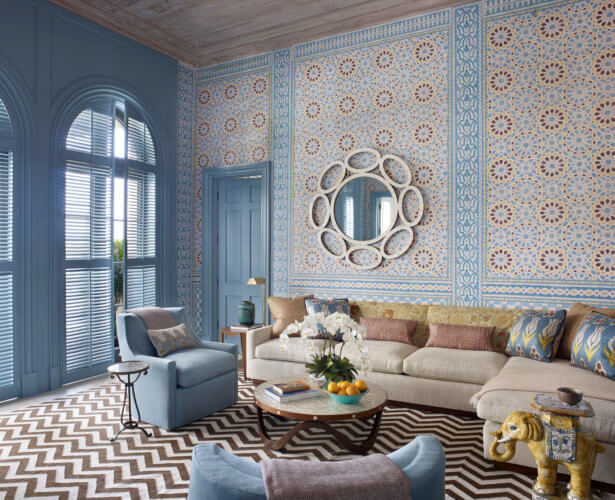
Usually, they come to him with the concept. Together, they discuss the color palette and the style of painting. Artgroove “runs the gamut when it comes to style,” Genereux explains, everything from modern, abstract murals to 19th-century landscape paintings, and Art Deco style to Expressionistic. With each request, Artgroove will then pull references and do research. “It’s great to get a little bit of specific education from each project,” he says, explaining that he is looking at “What makes this style or period? Because now I have to create my own and it has to look like it came from this period.”
“Luckily, some clients really defer to us and those are always the most successful jobs — clients that are engaged and have ideas but don’t try to completely manage it . . . you have to have a little bit of creative room on the leash so that you can make something.”
Scale drawings, known as maquettes, follow. First a pencil sketch is done to show to the clients and if the response is favorable, then it is colored in. In fact, he is considering do- ing a show of these maquettes he has kept from the last two decades.
Then comes the painting in Artgroove’s Manhattan studio. The artists hang heavy-duty muslin — a lightweight smooth canvas — and stretch it out. It can be stretched out to 100 feet long and trimmed to the required size.
Most of the time, the spaces that Genereux is creating art for don’t even exist yet. “We’re almost always working off of blueprints, but then as the space starts to become ready, we always want to field-verify before we cut anything.”
They will always paint extra material that can be trimmed during the installation process. However, if the painting has to line up with something architecturally, then verifying the measurements in the field is a must. How far in advance do clients come to him? “Not far enough,” he says quickly.
There is no easy answer when it comes to how long a certain project will take. It all depends on the size and complexity. None has ever been less than a month, he says. Typical jobs are at least a few months. During a recent conversation, he was working on a Hudson River Valley landscape that was 17 feet long and 7 1⁄2 feet high. It has been a three-month-long endeavor.
Artgroove redid all the murals for Tavern on the Green in Manhattan in the 10 years before the famed restaurant closed. He took photos of three different springs at Central Park for one oil painting, which was 170 feet long and 8 1⁄2 feet high. About 10 people worked on it for almost a year. “It was the most mind-blowing painting,” he recalls. Just a few years later, Tavern on the Green closed and he says the painting was auctioned off.
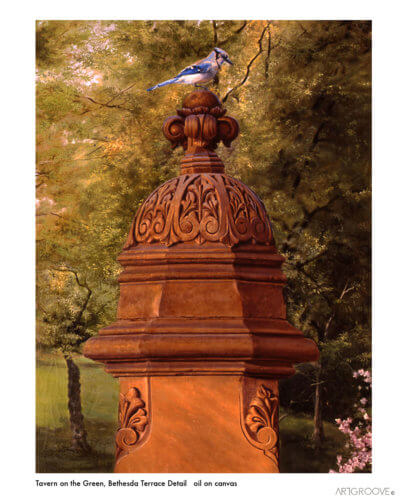
Murals don’t just cover a single, flat surface, but often wrap around an entire room. “We’ve done I don’t know how many lattice murals down in Palm Beach and it’s always the whole room and sometimes the ceiling as well,” he says.
About five years ago, one project in Palm Beach was very elaborate. “It was all intricate lattice work — really intricate so it had neoclassical carvings, but then all the lattice was painted in the mural in like a dark green and then glazed so they have an age to it,” he explains. For the wooden beams and baseboards on-site, he painted and glazed them with the exact same color. “So when we put our murals up, the painted architecture went right into the real architecture and you were like, ‘Wait a minute. What’s real and what’s not?’ It all became one room and I like when that happens.”
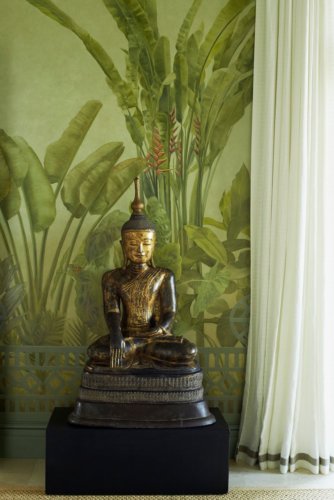
In West Palm Beach, one recently completed mural for the award-winning designer Harry Heissmann may just make you feel as if you’re under water surrounded by sea kelp. Located in a new building, it’s the first thing you see when you get off the elevators. The entry desk was painted a dark brown, too. “When you come out of the elevator, it looks like you’re in an aquarium because the rest of it just goes away and it feels dark,” Genereux says.
While Genereux has been focused on the art direction of his growing business, in recent years he has been getting back to doing the actual artistry, partly because Artgroove is so busy and he cannot find enough people to do the work the way he wants. “Also because I miss painting,” he says.
Asked if he is a perfectionist, he says, “If you said that out loud to the people who work for me, you would get a pretty big laugh.” He then walks into another room and asks them and they do indeed laugh.
“I honestly believe it’s one of the reasons we’ve stayed busy for all the 20 years. Nothing is going out the door unless it’s looking really good.”
View more of Artgroove’s work at artgroovenyc.com.
This article appeared in the January 2022 edition of Behind The Hedges magazine.



